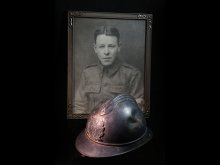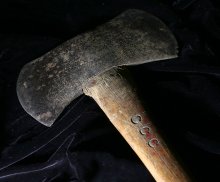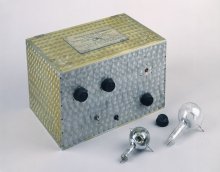Modern Era (1917-present)
The state’s Modern Era has been one of continued growth and change. Following World War I and the nation’s greatest economic collapse, public works projects of the New Deal put people to work on civic projects, such as building roads and infrastructure, and brought history to life by protecting a number of historic places around the state. The Federal Arts Program of the W.P.A. paid artists to create paintings, prints, sculptures, and murals for civic beautification, pride, and capturing the moment. Beginning in 1941, the state’s agricultural and manufacturing sectors and the sacrifices of citizen-soldiers played an important role in making the United States a leader on the world stage.
When American forces joined World War I, Kent Hagler of Springfield, Illinois, was desperate to join the military, but a childhood injury prevented him from serving. Undeterred, he joined the American Field Service in France as a volunteer ambulance driver on July 17, 1917. He wore this helmet throughout his time in France.
This axe was used by a Civilian Conservation Corps laborer working at Pere Marquette State Park between 1933 and 1940, one of more than a dozen state parks that were developed or improved with CCC labor.
The Chicago Century of Progress Exposition of 1933-34 celebrated the alliance between science and industry, conveying a message of hope for a better future in times of depression. The most dramatic and anticipated moment of the opening ceremony in the evening of May 27, 1933, was when the illumination of the fair was turned on, unfolding as a spectacle of light and color.
Pages









